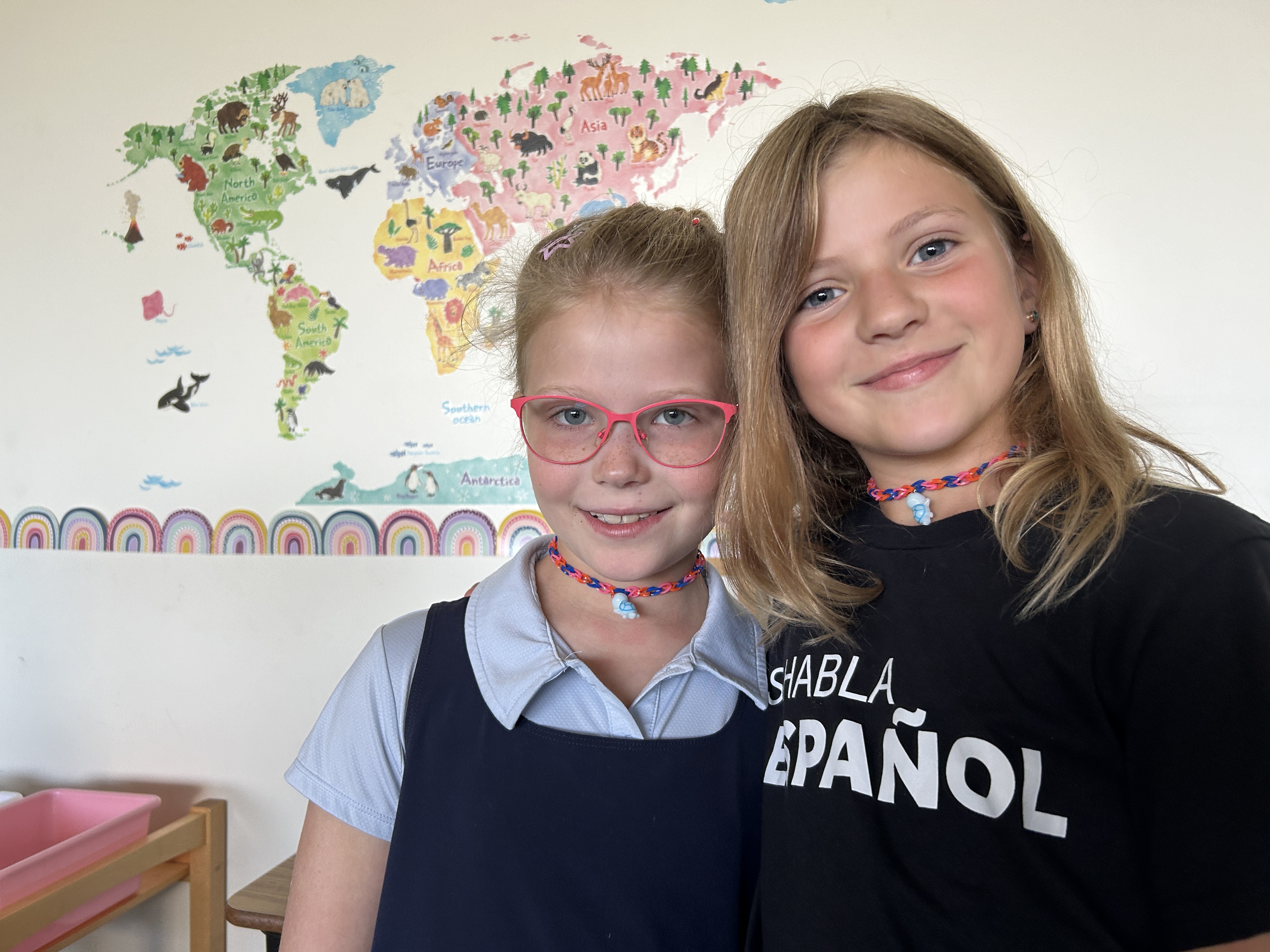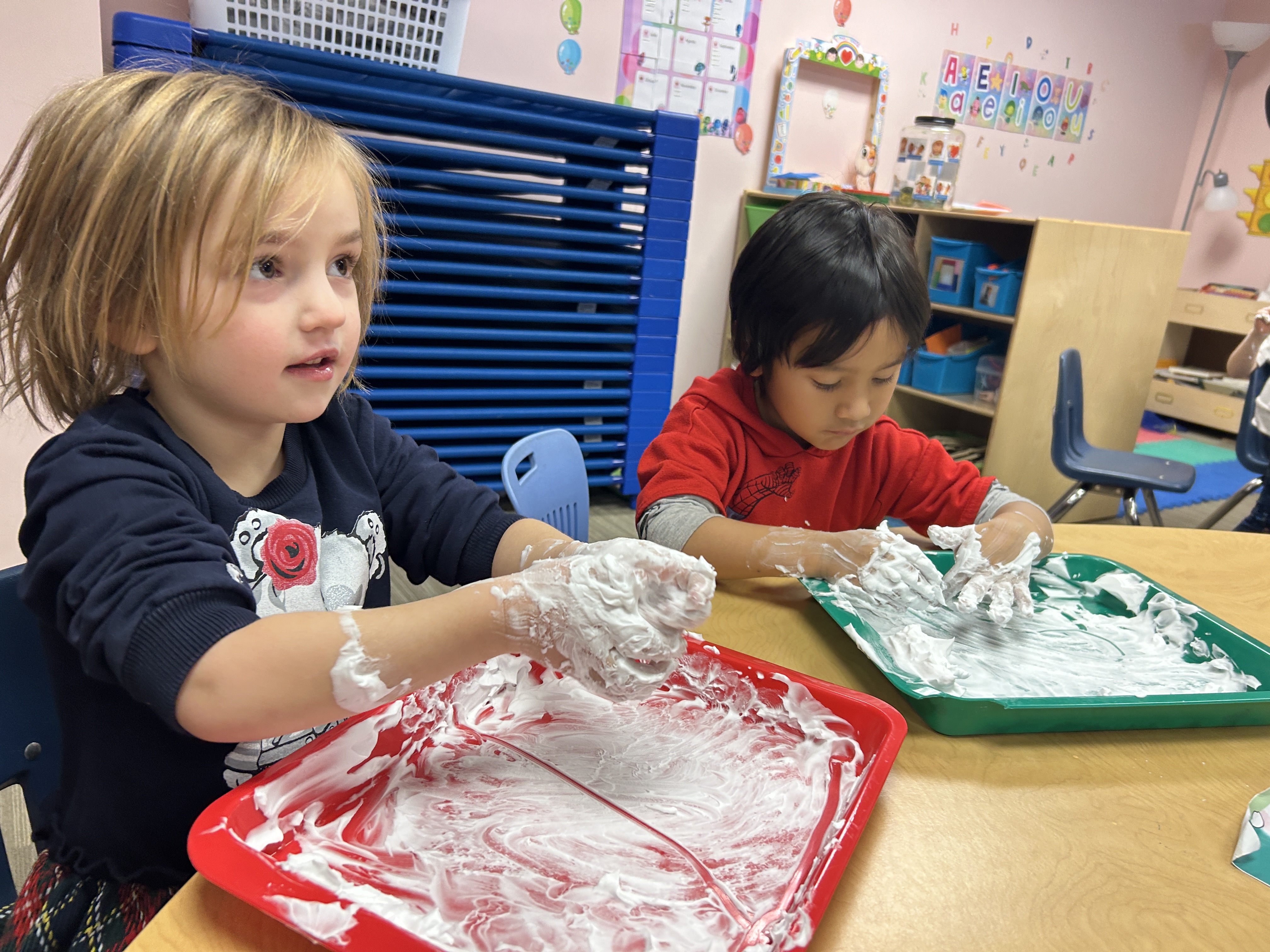
General Questions
Where is the school located?
ISLA is located at 5350 W 78th St, Edina, MN 55439, beginning August 2021. Visit the Contact Us page for map and directions.
Who are the teachers?
ISLA has a balance of native speakers of English and native speakers of Spanish. Teachers collaborate to create the best curriculum in both languages. ISLA staff members represent Spanish-speaking countries all over the world! More information on the teachers at ISLA can be found on our Our Teachers page.
Who can attend at ISLA?
As a public school, any elementary aged child living in the state of Minnesota may enroll at ISLA.
What is the class size?
The average classroom size at ISLA is approximate 24 students. For enrollment purposes, the size is capped at 25 students per class in all grade levels.
Where can I find the school calendar?
ISLA is an independent charter school. Visit the Calendar page to view or download a copy of the current school calendar.
Are there before and after school programs at ISLA?
ISLA offers before and after school care called Aventuras.
What about transportation at ISLA?
Residents of the Edina school district receive transportation to ISLA free of charge. Families of students residing within ISLA's busing boundaries (north and east of 494, west of 35W and south of 55) may request busing. Families living outside of ISLA's busing boundaries may transport their child(ren) to/from the nearest existing bus stop. Visit isla.school/families/transportation for more information.
What happens after 5th grade?
The robust Spanish immersion, International Baccalaureate program aims to prepare your child for any of the Spanish immersion offerings in middle school such as those in Hopkins, Minnetonka, Eden Prairie and the planned offering in the Edina School District. For the past many years, ISLA’s program was cooperatively articulated to the Spanish immersion program in the Hopkins School District, demonstrating its long track record of success. ISLA graduates have gone on to have successful academic careers in Hopkins, Minnetonka and Eden Prairie that offer Spanish immersion tracks through high school where students can continue to take an array of advanced Spanish classes to earn them college credit.

Academic Program Questions
What curriculum is being used?
International Spanish Language Academy is full one-way immersion program and an International Baccalaureate Primary Years Programme. enVision Mathmatics is used for Math instruction. FOSS science kits provide a hands-on exploratory science program. Harcourt reading are used in all grades in Spanish, as well as English in grades 2-6. Teacher-developed units of inquiry are primarily based on MN Science and Social Studies standards.
What is International Baccalaureate Primary Years Programme (IB PYP)?
The IB PYP is an approach to teaching through inquiry-based, integrated units. With guidance from the International Baccalaureate Organization, ISLA has developed and implemented these units of inquiry to allow students to study a variety of topics in-depth. For a more detailed explanation of IB PYP, visit the International Baccalaureate Organization website.
What is immersion?
Immersion is a means of teaching students a second language. Students learn content through the second language. Immersion schools are responsible for same state standards as other public Minnesota schools.
How does immersion work?
Immersion means that subject content is presented to children in a natural way. Children learn the second language in much the same way they acquired their first language. Below are the following websites of national organizations that provide detailed explanations of immersion and research on immersion:
- Center for Applied Linguistics
- Center for Advanced Research on Language Acquisition at the University of Minnesota
How widespread are immersion programs?
There are approximately 300 language immersion programs found in the United States. These schools represent 18 different languages, with more than 42% of the schools teaching Spanish immersion.
American immersion programs are widely modeled after Canadian French programs. French Immersion programs are available in all ten Canadian provinces and each of the territories. There are currently over 300,000 students enrolled in more than 2,100 schools across Canada (Doyle, n.d.).
Hundreds of international schools operate as immersion schools all over the globe. These programs have been in operation for decades.
There are more than 70 immersion programs in Minnesota, starting in preschool and going all the way to Senior High.
What is the purpose of language immersion?
The main purpose of language immersion is to promote bilingualism in an ever-global community. Immersion also helps to spread and appreciate Hispanic culture. Students will learn the same from the MN state standards as all MN public schools are required to do, but will have the added benefit of growing up bilingual. The only distinction is the language of instruction and this difference has been shown to have many positive effects for its students.
Why is bilingualism valued so highly?
The fact that Language Immersion receives so much support is largely because it promotes bilingualism. Bilingualism has been shown to have positive effects on cognitive skills and, contrary to some common beliefs, does not interfere with performance in either language (Genessee & Gándara, 1999). Bilingualism is also a powerful asset in a world that is becoming smaller and more connected by the minute. As far as languages, being bilingual can help in reading and literacy skills, as long as the two languages use the same alphabet. It also aids in the acquisition of a third language if that language is similar, for example if two or three of your languages are Romance Languages (French, Spanish, Italian). Bilingual students have also been shown to outperform their monolingual counterparts in non-language related subjects, such as mathematics. Even when the monolinguals’ schools had many more teaching resources, bilinguals still scored better on math assessments (Clarkson, 1992). Thus, bilingualism has many positive effects both cognitively and socially and it makes perfect sense to strive for this goal.
Will Spanish Immersion students become fluent in Spanish?
Spanish Immersion students, especially those enrolled in early Immersion, achieve levels of written and oral comprehension very similar to those of native Spanish speakers. However, their writing abilities will be somewhat lower. Nonetheless, Spanish Immersion students, by the end of their education, should be perfectly capable to participate in a Spanish community, study at a Spanish university, or even work in a Spanish workplace (Obadia, 1996). At ISLA, students are immersed in the Spanish language for many more hours each day than other area immersion programs. This commitment to the second language results in a higher level of fluency at an earlier age, and a more extensive vocabulary.
Are there any adverse effects on English proficiency in a Spanish Immersion program?
Research indicates that early Immersion students may show a bit of a lag in their English skills in the primary grades, specifically in grammar issues like capitalization, but that lag quickly disappears following the introduction of language arts studies in Grade 2. By Grade 5, there are absolutely no noticeable differences in English proficiency between Spanish Immersion students and non-Spanish Immersion students (Obadia, 1996). In fact, Language Immersion students have repeatedly outperformed their counterparts on English reading assessments (PISA, 2000). At ISLA, the majority of our students demonstrate proficiency in English on our Measures of Academic Progress (MAP) and MCA tests already in third grade.
What kinds of standardized tests are conducted at ISLA?
ISLA participates in MCA (Minnesota Comprehensive Assessment) every spring. Students also are evaluated through the MAP (Measures of Academic Progress) and National Spanish Examination in 6th grade. Detailed information on the standardized tests that ISLA takes part in can be found on the Assessments page.
Will Gifted and Talented Services be offered?
Teachers differentiate the curriculum to accommodate the needs of all students. The International Baccalaureate Primary Years Programme is enriching and challenging through its rigorous inquiry approach. It provides a high quality education for children.
Are Special Education services offered?
As a public school, ISLA serves all children who enroll at the school. We currently have special education teachers on staff and contract for special education personnel on an as-needed basis, in compliance with Minnesota law.

Charter School Questions
What is a charter school?
Charter schools are public K-12 schools started by parents, teachers, and/or community members who apply for a "charter," which defines the school's specific mission and goals, and how these goals will be measured. Charter schools must be authorized by a sponsor, who then files an affidavit of intent to sponsor a charter school with the state for approval. Sponsors of charter schools may be non-profit organizations, foundations, local school districts, intermediate school districts, or post-secondary institutions.
Charter schools are accountable to their sponsors, parents and families, the state, and the public for achieving measurable results in student achievement and for implementing fiscally sound management. Charter schools are extremely diverse in their focuses. From project-based high schools to arts-intensive schools to online learning and technology-focused schools, the missions of charter schools in Minnesota vary widely. Since charter schools are public schools, they are open to anyone, free of charge.
What is the difference between a charter school and other public schools?
Charter schools are public schools that are site-based and managed, meaning that parents, teachers, and local community members choose the people who govern the operation of the school. Charter schools elect their own school boards to oversee all aspects of the school's mission, goals, and operations.
The autonomy charter schools enjoy creates an environment where creativity and innovation in teaching and learning flourish. In addition, charter schools often have a particular approach to education or focus for their programs that differentiates them from other schools. For example, some charter schools focus on experiential learning, or Core Knowledge, or project-based learning, or technology. Often, charter schools have smaller enrollments than neighboring district schools, offering smaller class sizes and lower student to teacher ratios. A Charter school is a individual school and a District of its own.
How are charter schools doing in Minnesota?
The charter school sector in Minnesota continues to grow. In 2023, over 68,000 students in Minnesota attended 180 charter schools. As charter schools continue to succeed in serving students and families who seek innovative, unique, and creative environments for teaching and learning, the charter school sector will continue to grow. The performance of individual schools has been documented in the Profiles of Minnesota Charter Schools.
The Minnesota Department of Education has also released a report card for every public school in the state outlining a school's performance in academic achievement, school safety, student participation, parent satisfaction, and overall financial management.
How are charter schools funded?
Charter schools are funded by the State of Minnesota on a per-pupil basis. In addition, charter schools receive state support for their facilities expenses because they cannot issue bonds or raise taxes through levies like other school districts. Charter schools currently receive up to three years of federal charter school start-up funding. Charter schools can qualify for federal title funding, English Language Learning, and special education funds.
As a public charter school, ISLA has no taxing authority, and does not receive local district referendum funds. ISLA participates in optional fundraising activities to help bridge the financial gap in order to deliver the best education and school experience possible.
Additional Charter School information can be found by visiting the Minnesota Association of Charter Schools site.
Do charter schools have admissions policies?
Charter schools are public schools and are, therefore, bound by public law that defines public school admission policies as nonsectarian, nondiscriminatory, and tuition free. Charter schools are open to all students free of charge. For detailed information about ISLA admissions visit our Enrollment page.
